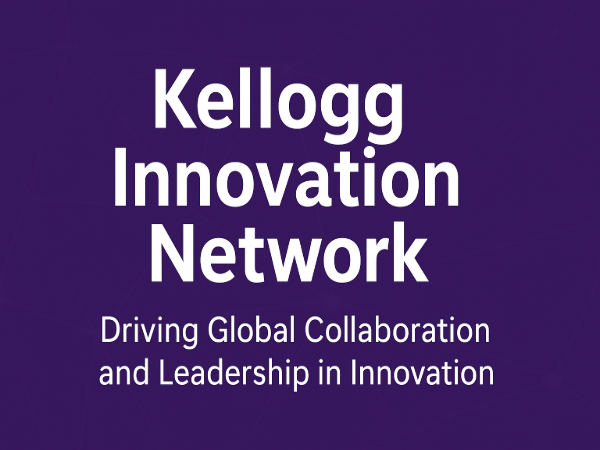Kellogg Innovation Network: Driving Global Collaboration and Leadership in Innovation
How the Kellogg Innovation Network Connects Academia, Industry, and Policy to Solve Global Challenges

The Kellogg Innovation Network (KIN) is a global initiative founded in 2003 by Professor Robert C. Wolcott of Northwestern University’s Kellogg School of Management. Designed as a collaborative forum, it brings together senior leaders from business, academia, government, and nonprofits to address global challenges through innovation, strategy, and cross-sector dialogue. With its invitation-only model, KIN has become a hub where ideas transform into action, sparking projects, partnerships, and long-term value creation across industries and societies worldwide.
Introduction
In today’s world, where disruption is constant and innovation is the currency of progress, networks that connect diverse perspectives are more vital than ever. The Kellogg Innovation Network emerged as one of the most influential platforms bridging academia, industry, and policy to drive meaningful change. Over two decades, it has cultivated a reputation as a think tank, leadership hub, and collaborative laboratory where ideas not only flow but also take root and flourish.
This article explores the history, vision, impact, and ongoing relevance of the Kellogg Innovation Network. We will look at its founding principles, key initiatives such as the KIN Global Summit, its role in shaping cross-sector collaboration, and its legacy through the World Innovation Network (TWIN). By the end, you will understand why the Kellogg Innovation Network continues to be a cornerstone of global innovation dialogue.
Origins of the Kellogg Innovation Network
The Kellogg Innovation Network was founded in 2003 by Professor Robert C. Wolcott, a scholar and practitioner of innovation and entrepreneurship at Northwestern University’s Kellogg School of Management. The early 2000s marked a time when globalization, digital technologies, and new business models were reshaping industries. Wolcott recognized that the challenges of this era—climate change, economic inequality, technological disruption, and shifting geopolitical landscapes—could not be solved by any single sector.
KIN was envisioned as an invitation-only forum where senior leaders could gather not just to discuss problems but to collaborate on solutions. Unlike traditional academic conferences or corporate summits, KIN sought to blur the boundaries between academia, business, and government, fostering conversations that were as strategic as they were visionary.
Mission and Vision
At its core, the Kellogg Innovation Network exists to empower leaders to innovate collaboratively. Its mission revolves around three key objectives:
Fostering Cross-Sector Dialogue – Bringing together executives, academics, policymakers, and nonprofit leaders to exchange perspectives.
Accelerating Practical Innovation – Turning conversations into actionable strategies and initiatives.
Building Sustainable Impact – Ensuring that innovation drives not only profit but also long-term societal benefits.
The vision of KIN is to create a world where innovation is inclusive, collaborative, and impactful, helping societies thrive amidst disruption.
The KIN Global Summit
One of the most recognizable aspects of the Kellogg Innovation Network is the KIN Global Summit. First held in the mid-2000s, this annual gathering quickly became a magnet for global leaders. The summit convenes senior executives, entrepreneurs, government officials, academics, and thought leaders from around the world.
Key Features of the Summit
Global Representation: Attendees represent dozens of countries, ensuring diverse cultural and professional perspectives.
Action-Oriented Discussions: Rather than abstract debates, the summit focuses on practical solutions to pressing issues.
Seed Funding and Support: Promising projects and ideas often receive resources, mentorship, and partnerships for implementation.
High-Profile Speakers: Past summits have featured industry giants, pioneering academics, and influential policymakers who share insights on emerging trends.
The summit became not just an event but a launchpad for collaboration, inspiring leaders to return to their organizations with fresh ideas and new partners.
KIN Catalyst Forums and Expeditions
Beyond the flagship summit, KIN has developed other programs to deepen its impact.
Catalyst Forums
These are smaller, more focused gatherings that bring together leaders around specific themes such as sustainability, healthcare innovation, or digital transformation. By narrowing the scope, Catalyst Forums enable deeper exploration and tangible outcomes.
KIN Expeditions
KIN has organized expeditions to global innovation hubs such as Tel Aviv, Israel. These immersive experiences allow participants to engage directly with local entrepreneurs, researchers, and policymakers. Such expeditions give leaders firsthand exposure to innovation ecosystems, fostering cross-border collaboration.
Bridging Academia, Industry, and Policy
One of the defining characteristics of the Kellogg Innovation Network is its ability to bridge silos. Academic research often struggles to influence real-world practice, while corporate strategies can overlook broader societal impacts. KIN creates a neutral space where insights from different domains intersect.
For example:
Academics provide evidence-based research and frameworks.
Executives bring practical challenges and opportunities from industries.
Government leaders offer policy perspectives and regulatory insights.
Nonprofits highlight grassroots realities and community needs.
The synergy among these groups results in holistic approaches to complex challenges.
Impact Stories of the Kellogg Innovation Network
Over the years, KIN has catalyzed a range of projects and collaborations. While some remain behind closed doors due to the confidential nature of discussions, several themes of impact have emerged:
Sustainability Initiatives: KIN has fostered discussions that influenced corporate sustainability strategies.
Global Health Solutions: Leaders from healthcare and technology sectors have collaborated on projects to improve access and affordability.
Entrepreneurship Development: By connecting startups with established companies and investors, KIN has contributed to the growth of entrepreneurial ecosystems.
Cross-Border Partnerships: Expeditions and summits have sparked partnerships between companies and governments across continents.
Evolution into the World Innovation Network (TWIN)
In recent years, the Kellogg Innovation Network expanded beyond its origins and evolved into the World Innovation Network (TWIN). While rooted in the same vision, TWIN represents a broader, independent platform with a truly global footprint.
This evolution reflects the increasing importance of global collaboration in addressing 21st-century challenges. TWIN continues to embody the spirit of KIN while scaling its reach, influence, and ability to mobilize resources for innovation.
Why the Kellogg Innovation Network Matters Today
The relevance of the Kellogg Innovation Network is greater than ever. We live in an age marked by:
Technological Disruption: Artificial intelligence, automation, and biotechnology are transforming industries.
Global Challenges: Climate change, pandemics, and inequality demand collaborative solutions.
Leadership Transformation: The role of leaders is shifting from control to facilitation, requiring networks of trust and innovation.
KIN exemplifies how collaborative networks can future-proof organizations and societies. By creating platforms for cross-sector innovation, it ensures that disruption becomes an opportunity rather than a threat.
Lessons from the Kellogg Innovation Network
There are several key takeaways from the story of KIN:
Collaboration is Non-Negotiable: No single sector can solve global challenges alone.
Diversity Drives Innovation: When leaders from different backgrounds collaborate, breakthroughs emerge.
Action is as Important as Ideas: The true value of dialogue lies in turning insights into measurable outcomes.
Networks Build Resilience: Strong connections across sectors prepare organizations to adapt to crises.
The Future of Innovation Networks
As the world becomes more interconnected, innovation networks like KIN will play an even greater role. Future directions may include:
Digital Collaboration Platforms: Expanding online forums to connect leaders without geographic barriers.
Youth and Emerging Leaders: Bringing the next generation of innovators into the dialogue.
Deeper Sector Integration: Linking areas like technology, healthcare, and sustainability in unprecedented ways.
Focus on Equity: Ensuring that innovation benefits are shared across societies, not concentrated in a few regions or industries.
Conclusion
The Kellogg Innovation Network represents more than just an academic initiative; it is a pioneering movement in collaborative innovation. By uniting academia, industry, government, and nonprofit leaders, it has redefined how global challenges are approached. From its summits and expeditions to its legacy in the World Innovation Network, KIN has shown that innovation thrives when diverse voices come together with a shared purpose.
In an era where disruption is inevitable, the Kellogg Innovation Network stands as proof that collaboration is the most powerful tool we have to create a better future.



